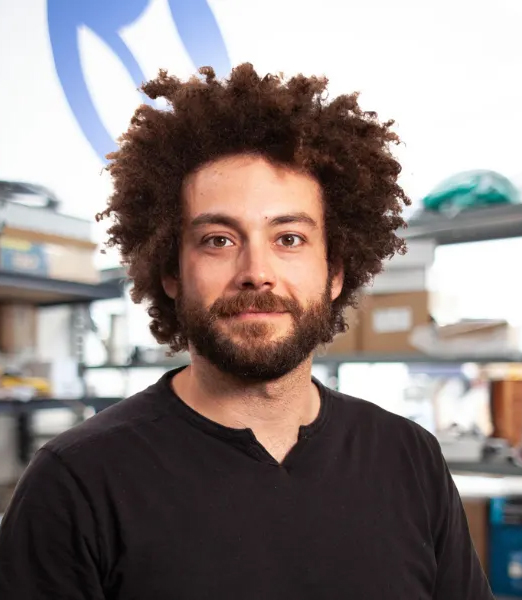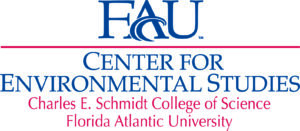By Carlos Roa, VoLo Foundation
Daniel Cavero is the co-founder and chief technology officer of Noya, a company dedicated to carbon capture. His story stems from what he describes as “a deep passion for nature.”
Cavero frequently rode a bicycle and, in fact, came to the United States in 2009 to pursue a career in cycling. However, an accident in which he suffered vertebral fractures brought his plans to a halt. At the time, he was studying mechanical engineering and taking classes via email, as he was unable to attend in person.

“Three professors helped me understand climate change from different perspectives. One was about economics and geopolitics, another focused on thermodynamics and the last one dealt with materials. In particular, the thermodynamics professor explained to me that CO₂ is a gas that retains more heat than other gases, such as oxygen and nitrogen when interacting with sunlight, which is known as the greenhouse effect.”
Daniel adds that natural systems, such as the carbon absorption by oceans and plants, are not fast enough to remove it at the rate at which we emit it. “By understanding the problem physically and mathematically, I knew that climate change was a chaos that needed to be attacked.”
After graduating, he worked on projects related to emissions reduction. Later, he came across Stanford research on technologies to capture and transform CO₂ into useful materials.
“My co-founder and I decided to focus on capturing it first, which is simpler. We started with a prototype in our backyard, which created an anecdote for us when neighbors called the police thinking we were building a rocket. Now we have grown to a team of 30 people working on our first commercial pilot in Oakland, California.”
The following is more of the interview.
Could you explain in simple terms how the carbon capture process works?
“The air passes through a chemical filter that traps the CO₂. Then, we compress that filter to extract raw CO₂, which can be stored in subsurface aquifers, where it reacts with the porous rock and is trapped forever. That’s the way Noya is looking to solve the problem. There are other ways to do it, such as turning it into ethanol, getting it into cement or concrete to sequester it, or turning it into sustainable aviation fuel.”
Why did you choose to store CO₂ in aquifers, instead of transforming it into other products, such as cement or fuels?
“Because it is the most scalable, safe and proven way. Turning CO₂ into cement, for example, sounds appealing, but there is not enough cement in the world to capture all the CO₂ that is required. Also, converting it into fuels such as ethanol is not sustainable in the long term, as those fuels burn and release CO₂ again.”
On their website, Noya mentions carbon credits, how do they work?
“Carbon credits are our product. For every ton of CO₂ we capture, we generate a credit that can be purchased by the U.S. government or by large corporations like Shopify, Amazon or Microsoft. These companies buy credits not out of altruism, but because they understand that climate change impacts affect their finances and operations. In that universe of large corporations, there is awareness, there is clarity, there is certainty.”
Can you estimate in any way the losses that inaction in the face of climate change would bring to these huge companies?
“All these companies are designed to keep growing, so they are not prepared for a downward shift, economically speaking. It’s very complicated to put a number on the crisis, but it’s probably hundreds of trillions of dollars.”
Our interviewee explains that the aforementioned corporations have financial models calling for solving the problem because otherwise, the impacts of climate change will have a negative effect on their numbers.
“You can’t imagine what it would mean for Amazon, for example, if an economy the size of Germany’s were to collapse; or if California reduced its consumption by 10% due to issues with wildfires when that state is the fifth-largest economy in the world. That made me realize we needed to move away from the ‘How are we going to do this?’ mentality.”
If this threat is not addressed, what are the negative impacts we could face?
“Without strong action, the impacts include massive flooding, severe drought, displacement of entire communities and global economic disruption. Florida, for example, would be receiving 50 hurricanes a year instead of 10. If we do not take action today and continue burning gasoline and oil, this could happen within the next 20 or 30 years. This is not only an environmental problem, but also a social and economic challenge that will affect everyone, especially the most vulnerable populations.”
What are the obstacles in growing the solution proposed by Noya?
“The biggest challenge is to secure renewable energy. Capturing CO₂ requires significant power, and competition for it will intensify in the coming years due to the growth of data centers and artificial intelligence. In addition, the carbon capture industry is relatively new, which means we must improve our efficiency to compete for these resources.”
VoLo Foundation’s Corrección Climática podcast, featuring an interview with Daniel Cavero (in Spanish), can be listened to here. Daniel Cavero’s session for VoLo Foundation’s Climate Correction Conference (in Spanish) can be watched here.
Carlos Roa is senior press and PR director for VoLo Foundation. VoLo Foundation is a financial supporter of The Invading Sea. Banner photo: Pollution is released from a smokestack (iStock image).
Sign up for The Invading Sea newsletter by visiting here. To support The Invading Sea, click here to make a donation. If you are interested in submitting an opinion piece to The Invading Sea, email Editor Nathan Crabbe at ncrabbe@fau.edu. To learn more about carbon capture, watch the video below.



